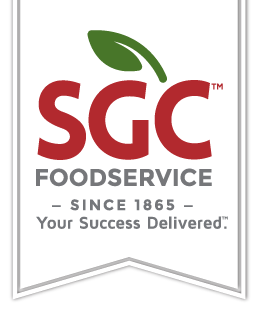What Came First? The Sales Increase or the Egg?
Forget the chicken. It’s the humble old egg that’s really the menu star. A long-standing mainstay on breakfast menus, eggs have proven to be equally appealing—and profitable—beyond the morning hours.
Americans eat about 280 eggs a year, according to U.S. Department of Agriculture data. Free from the stigma of being a high cholesterol food (a reputation that turned out to be scientifically debunked), eggs now benefit from the consumer trends of low-carb diets and all-day breakfast offerings.
The delicious factor of eggs can’t be ignored, either. The little black dress of the food world, eggs easily take on the flavor profile of other ingredients and can be adapted for any meal, setting, or restaurant tier.
“In restaurants, eggs are hugely Instagrammable,” Marc Dresner, manager of marketing communications at the American Egg Board told Food Business News in an article published in December. “Another thing is this idea of eggs for dinner. Eggs were historically, traditionally in this country and other countries a breakfast food… what we see now is not breakfast for dinner, not breakfast all day, but eggs for dinner.”
The execution of eggs as a savory menu offering varies according to the restaurant type. Fast food chains have increased the prevalence of eggs by extending their breakfast menus to all-day availability. At fast casual restaurants, eggs appear in egg salad sandwich form or on top of burgers and bowls. In sit down and fine dining restaurants, eggs have been surging as a visual flourish. The visual impact of a perfectly poached egg perched atop vegetable and meat dishes can deliver a new detail to a familiar dish.
Not unlike the scene in Forrest Gump where Bubba accounts all the ways shrimp can be prepared, the menu potential of eggs is virtually limitless. Deviled eggs, fried eggs, egg sandwiches, egg salad, shakshuka (a middle eastern egg dish), egg drop soup, chili rellenos, egg casseroles, egg burritos, Scotch eggs, chopped egg garnishes, sliced egg garnishes, fried egg garnishes—the possibilities transcend cultures and uses.
Though egg prices rose by as much as 35% during the first parts of 2018, according to the Department of Agriculture, costs have stabilized. As one of the lowest cost proteins available, eggs have long been an operator favorite. Trends, sales, and menus across the country show that the egg is now just as popular with consumers.
Global breakfast items, breakfast on the dinner menu, adding an egg to unexpected savory dishes—they’re all ways operators can incorporate eggs outside of the expected. With the lowest of menu costs, eggs can bring the highest of sales increases.

